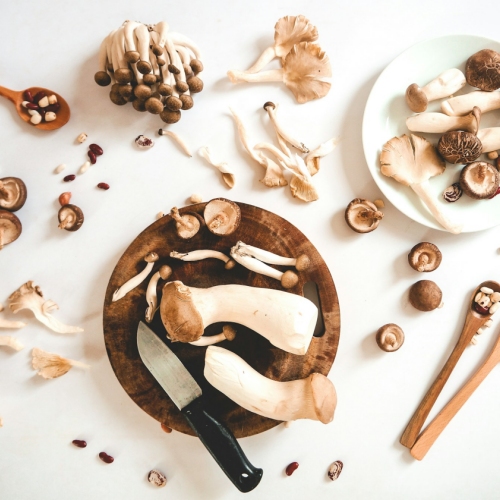A mushroom growing business involves cultivating and harvesting mushrooms for commercial purposes. This can include a variety of species such as button mushrooms, oyster mushrooms, shiitake mushrooms, and many others for cooking and medicinal purposes. The process typically involves creating controlled environments conducive to mushroom growth, providing the necessary substrate (such as compost or sawdust), managing humidity and temperature, and ensuring proper ventilation.
There are three main commercial categories we will look at: cooking/gourmet (low-margin high-demand), functional/supplements (medium margin medium demand ) and psilocybin/magic mushrooms (high demand, high profit but illegal).
Cooking/Gourmet Mushrooms: These are mushrooms primarily grown for culinary purposes. Examples include button mushrooms (Agaricus bisporus), oyster mushrooms (Pleurotus ostreatus), shiitake mushrooms (Lentinula edodes), and portobello mushrooms. They are commonly used in various dishes due to their flavor, texture, and nutritional value.
Functional/Supplement Mushrooms: These are mushrooms that are grown and marketed for their potential health benefits and medicinal properties. They may be consumed in various forms such as supplements, teas, or extracts. Examples include reishi mushrooms (Ganoderma lucidum), lion's mane mushrooms (Hericium erinaceus), and cordyceps mushrooms (Cordyceps sinensis). These mushrooms are often believed to have immune-boosting, anti-inflammatory, and other health-promoting properties.
Psilocybin/Magic Mushrooms: These mushrooms contain psychoactive compounds such as psilocybin and psilocin, which can induce hallucinogenic effects when ingested. They are used recreationally and, in some cases, for therapeutic purposes. Psilocybin mushrooms include species like Psilocybe cubensis, Psilocybe semilanceata, and others. However, it's worth noting that the cultivation and sale of psilocybin-containing mushrooms are regulated or prohibited in many jurisdictions due to their psychoactive properties and legal status.
Mushrooms can also be divided into fresh and dried (including powder used for supplements or in capsules).
Business Model
How to grow mushrooms
Starting out it is possible to grow mushrooms in a bucket. This method is often referred to as "bucket cultivation" or "bucket tek" (short for technique). While it might sound unconventional, it's a simple and cost-effective way to grow mushrooms, especially for hobbyists or those with limited space.
Here's a basic overview of how bucket cultivation typically works:
Preparation of Substrate: Mushrooms require a suitable substrate for growth. Common substrates include straw, sawdust, coffee grounds, or a combination of these materials. The substrate is usually pasteurized or sterilized to remove competing organisms that could inhibit mushroom growth.
Inoculation: Once the substrate is prepared, it's inoculated with mushroom spawn. Mushroom spawn consists of mycelium—the vegetative part of the fungus—grown on a nutritious material such as grain or sawdust. The spawn is mixed thoroughly with the substrate.
Container Setup: A clean and sterile bucket is filled with the inoculated substrate. The bucket may have holes drilled into it for air exchange and drainage. The substrate is then compacted and sealed with a lid or plastic wrap to maintain humidity.
Incubation: The bucket is kept in a warm, dark environment during the initial incubation period. This allows the mycelium to colonize the substrate and spread throughout the bucket.
Fruiting: Once the substrate is fully colonized by the mycelium, the bucket is exposed to light and fresh air to stimulate fruiting. Mushrooms typically begin to emerge from the substrate within a few days to weeks, depending on the species.
Harvesting: Once the mushrooms reach maturity, they are harvested by gently twisting or cutting them from the substrate. Harvested mushrooms can then be consumed fresh or dried for later use.
Bucket cultivation is especially popular for species like oyster mushrooms, which thrive in a wide range of substrates and environmental conditions. However, the specific methods and materials used may vary depending on the type of mushroom being cultivated and the preferences of the grower.
Food
Mushroom

